As an advanced 5th-generation aircraft, the F-22 represents the epitome of modern aerial dominance. Its expertise in stealth, derived from state-of-the-art materials and design, makes it nearly undetectable by enemy radar systems. Let’s Unveil the Best of the Stealth Titan F-22 Raptor, a marvel that achieves supersonic velocities sans afterburners, thus significantly tilting the balance in air combat engagements. Its unparalleled agility, facilitated by thrust-vectoring nozzles, bestows it with remarkable acrobatic abilities, allowing it to adeptly evade and outmanoeuvre adversaries.
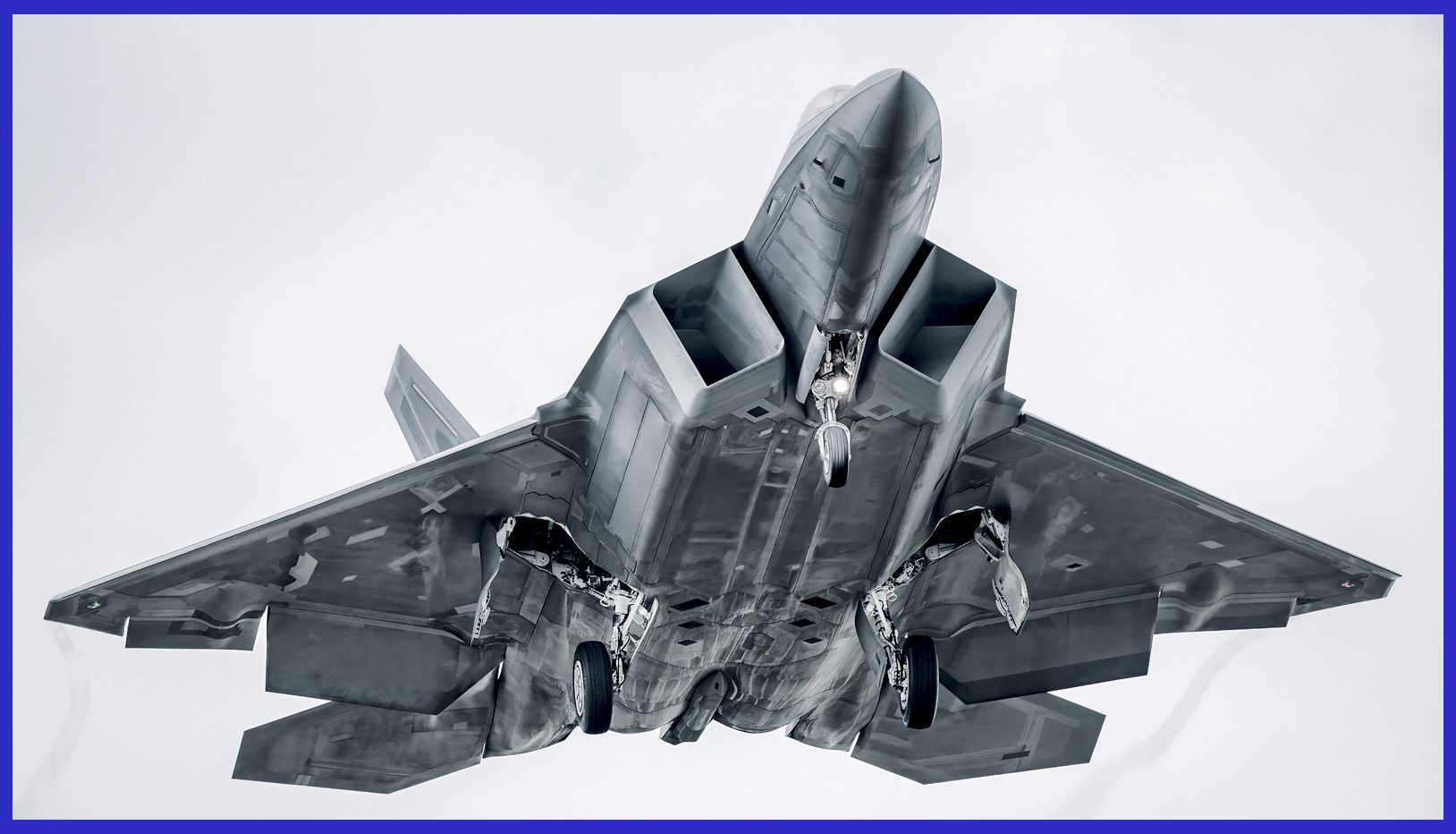
The fighter’s fusion of stealth, aerodynamic excellence, and advanced mission systems has propelled a revolution in air combat capabilities, establishing a new standard for its generation. Designed and developed by Lockheed Martin in collaboration with Boeing and General Dynamics, the project, codenamed “Senior Sky,” was initiated in the 1980s era to establish itself as the premier air superiority fighter, specifically tailored for the USAF Advanced Tactical Fighter (ATF) program. This single-seat, twin-engine, supersonic all-weather stealth fighter aircraft not only excels as a prime interceptor but also encompasses ground attack, electronic warfare, and signals intelligence capabilities, demonstrating unparalleled precision as of 2023 and beyond.
In fact, the F-22, known as the “Air Dominance Fighter,” outclasses all previous and existing American-origin fighters, but this superiority comes at a significant cost – its enormous price tag. Although the USAF had initially planned to purchase a total of 750 aircraft, the program was reduced to 195 (8 test models and 187 production aircraft) production units in 2009 due to each aircraft costing approximately $130 million at that time. Additionally, there were substantial expenses associated with flying and maintenance. As a result, the F-22 never achieved high numbers in its fleet.
Undoubtedly, everything in the world possesses its inherent pros and cons. However, the paramount aspect that distinguishes the F-22 Raptor, from its inception to the present day, is its pioneering and seamless integration of advanced technology, empowering it to rule the skies with the formidable strategy of “First Look, First Shoot, First Kill.”

The Concept Behind the Development of an Advanced Tactical Fighter
The development of an Advanced Tactical Fighter (ATF) is driven by the need to maintain air superiority and combat effectiveness in modern warfare scenarios. The concept encompasses a synthesis of cutting-edge technologies, innovative design principles, and tactical doctrines to create a platform that excels across various mission profiles.
The Story of its Origin: The issuance of the Advanced Tactical Fighter (ATF) requirement in 1981 set in motion a lengthy process that culminated in the F-22 Raptor’s introduction into service some 26 years later. During this period, both the world and technology underwent significant changes. The computer modelling techniques of the 1970s and 1980s could only ensure stealth performance for faceted shapes and straight lines.
The F-117 Night Hawk, though not an air-dominance fighter, lacked provisions for air-to-air weaponry. Its defence strategy centred around remaining undetected. However, even before 1999, when an older-generation SAM brought one down over Kosovo, it became evident that future combat aircraft would require stealth protection of an entirely different magnitude, all without compromising their combat capabilities due to stealth features.
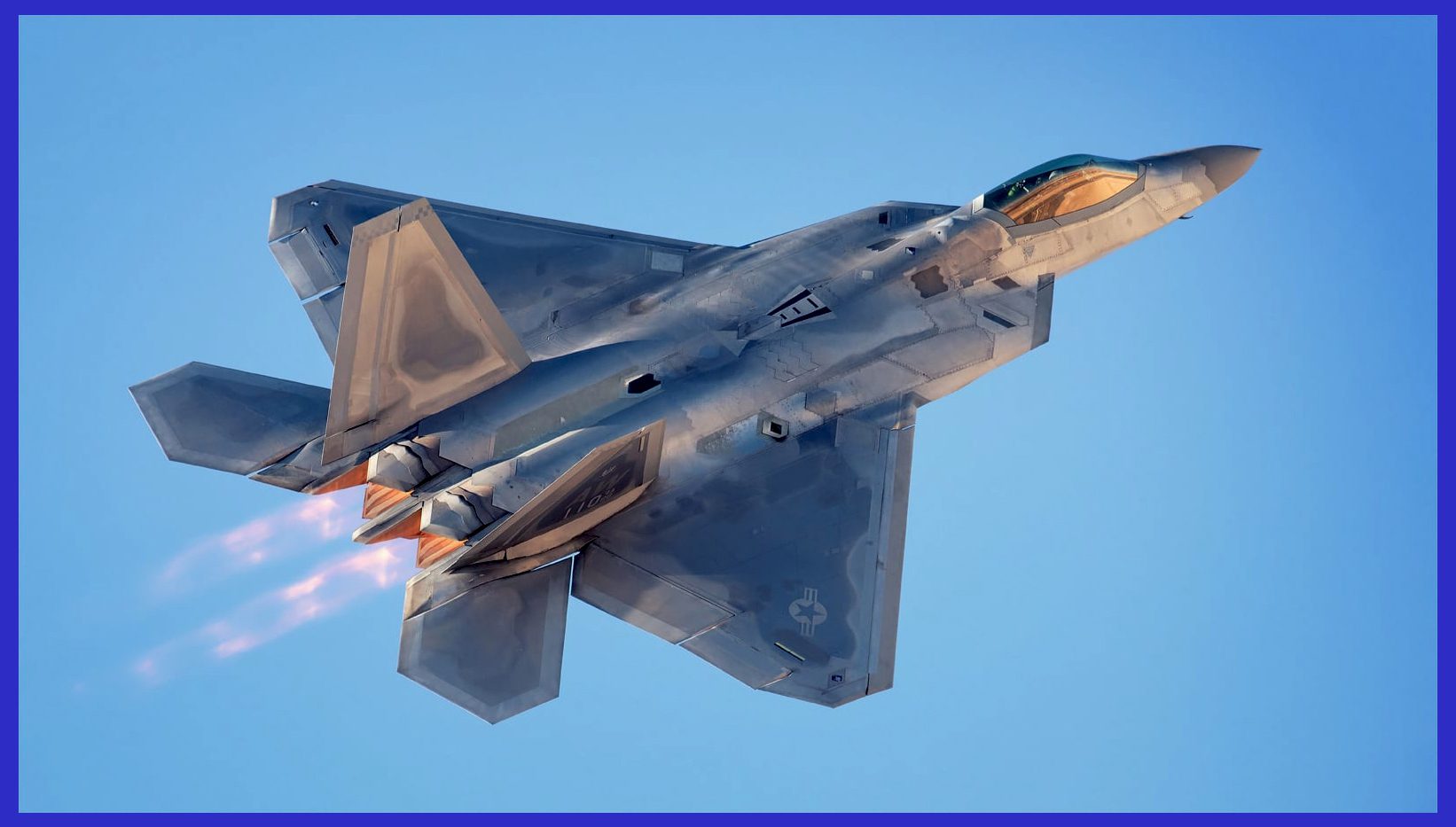
Furthermore, with the proliferation of the Sukhoi Su-27 “Flanker” and Mikoyan MiG-29 “Fulcrum” class of fighter aircraft, the need for an Advanced Tactical Fighter (ATF) became even more critical. It was imperative to execute offensive and defensive counter-air operations (OCA/DCA) within this fiercely contested environment. To accomplish this, the ATF program aimed to achieve a remarkable leap in performance by harnessing emerging technologies in fighter design.
The program resulted in the development of two competing prototype aircraft: Lockheed Martin’s YF-22 and the Northrop/McDonnell Douglas YF-23, both of which completed their inaugural flights in late 1990. Simultaneously, Pratt & Whitney and General Electric were commissioned to develop the propulsion systems for the ATF’s engine competition. Following a rigorous competitive evaluation process, on April 23, 1991, Secretary of the USAF Donald Rice announced the Lockheed team and Pratt & Whitney as the victors of both the ATF and engine competitions, paving the way for full-scale development.
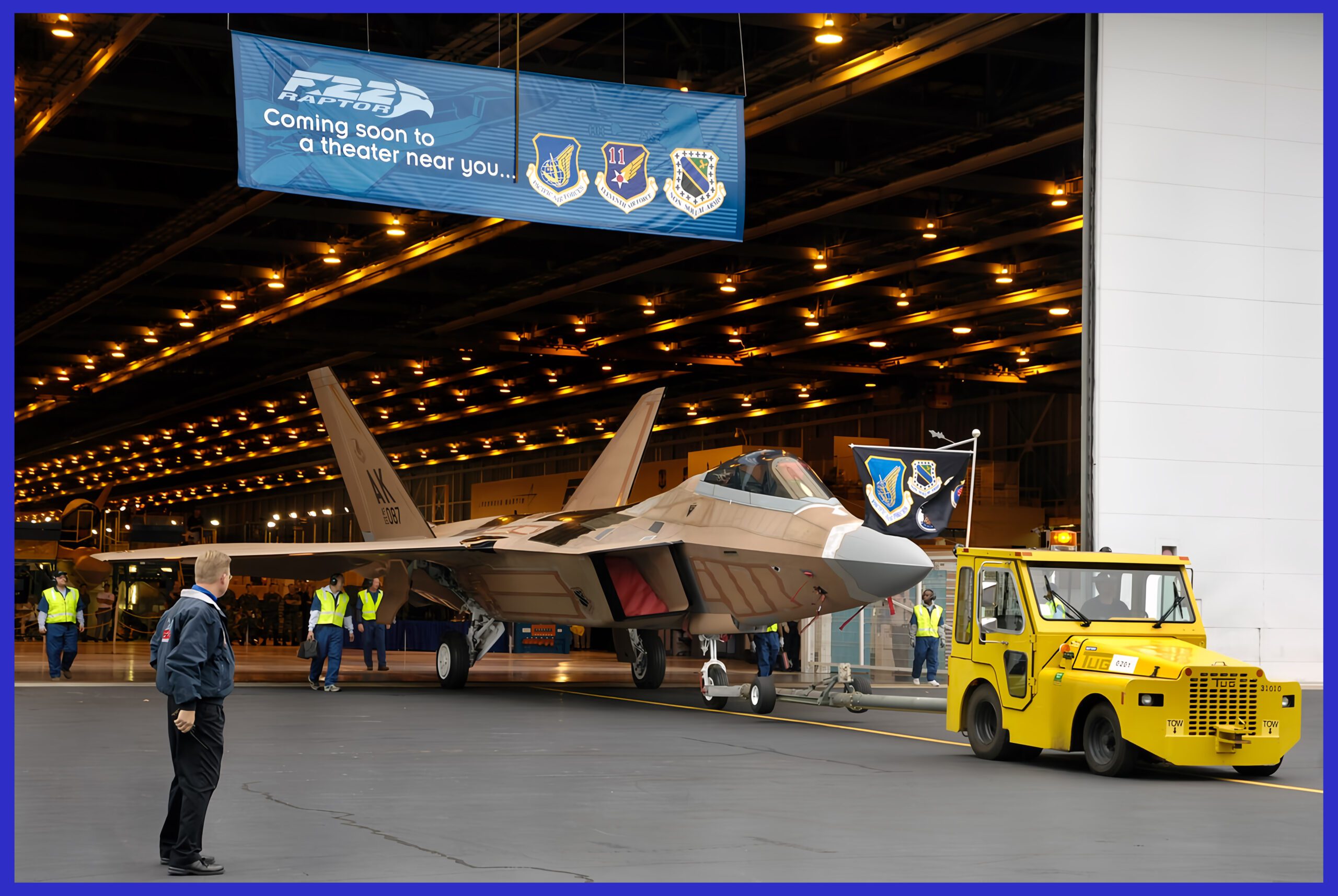
A Full-Scale and Calculated Development of F-22 Raptor
The journey from the YF-22 prototype to the full-scale development (FSD) F-22, which bore only a passing resemblance to the original concept, extended until the year 1997. This period coincided with the end of the Cold War, leading the Pentagon to gradually reduce both planned production rates and the total requirement, scaling down from the initial 750 to 339 aircraft. By 2004, with a shift in focus toward asymmetric counterinsurgency warfare in Iraq and Afghanistan, coupled with the remarkable escalation in per-airframe costs to $138 million, the Department of Defense (DoD) under Secretary Donald Rumsfeld further slashed the planned F-22 procurement to 183 production aircraft, despite the USAF’s original requirement for 381 aircraft.
In 2006, a multi-year procurement contract was granted, aiming to bring the total to 183 units, to be distributed among seven combat squadrons. The projected cost of the entire program was estimated at $62 billion. Subsequently, in 2008, Congress passed a defence spending bill that increased the total production of aircraft orders to 187. Nevertheless, the final count of airframes delivered is anticipated to remain at 183, as of August 2022, serving to equip seven operational squadrons in addition to training and test units.
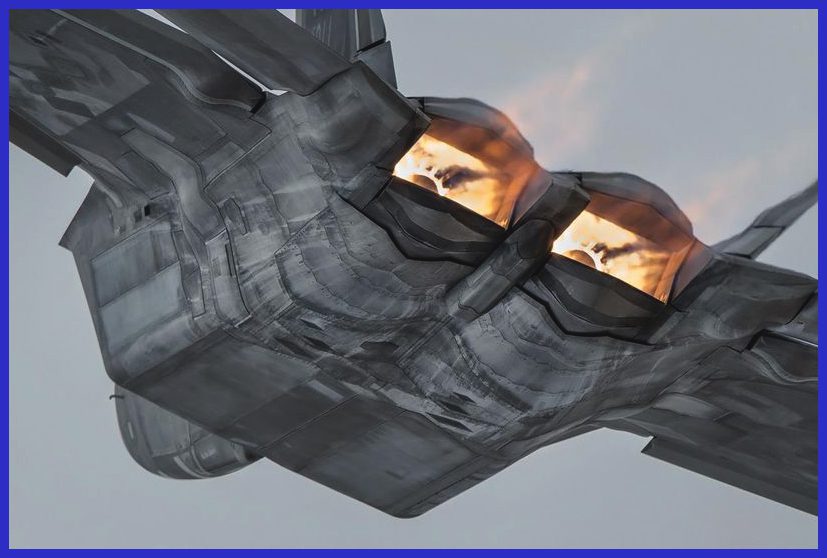
In its entirety, a total of 195 F-22s have been constructed since its inception. The initial two were EMD (Engineering and Manufacturing Development) aircraft in the Block 1.0 configuration, intended for initial flight testing and envelope expansion. Additionally, the third aircraft, a Block 2.0 variant, was meticulously crafted to replicate the internal structure of production airframes, allowing it to undergo tests involving full flight loads. Subsequently, an additional six EMD aircraft were manufactured in the Block 10 configuration to facilitate development and upgrade testing, with the last two of this set being essentially representative of production-quality jets.
The production for operational squadrons comprised 74 Block 10/20 training aircraft, alongside 112 Block 30/35 combat aircraft, bringing the total to 187. Among these, a Block 30 aircraft is exclusively designated for flight sciences activities at Edwards Air Force Base in California. Notably, Block 20 aircraft from Lot 3 onward underwent upgrades to conform to Block 30 standards, augmenting the Block 30/35 fleet to a sum of 149 aircraft, while 37 units remain in the original Block 20 configuration.
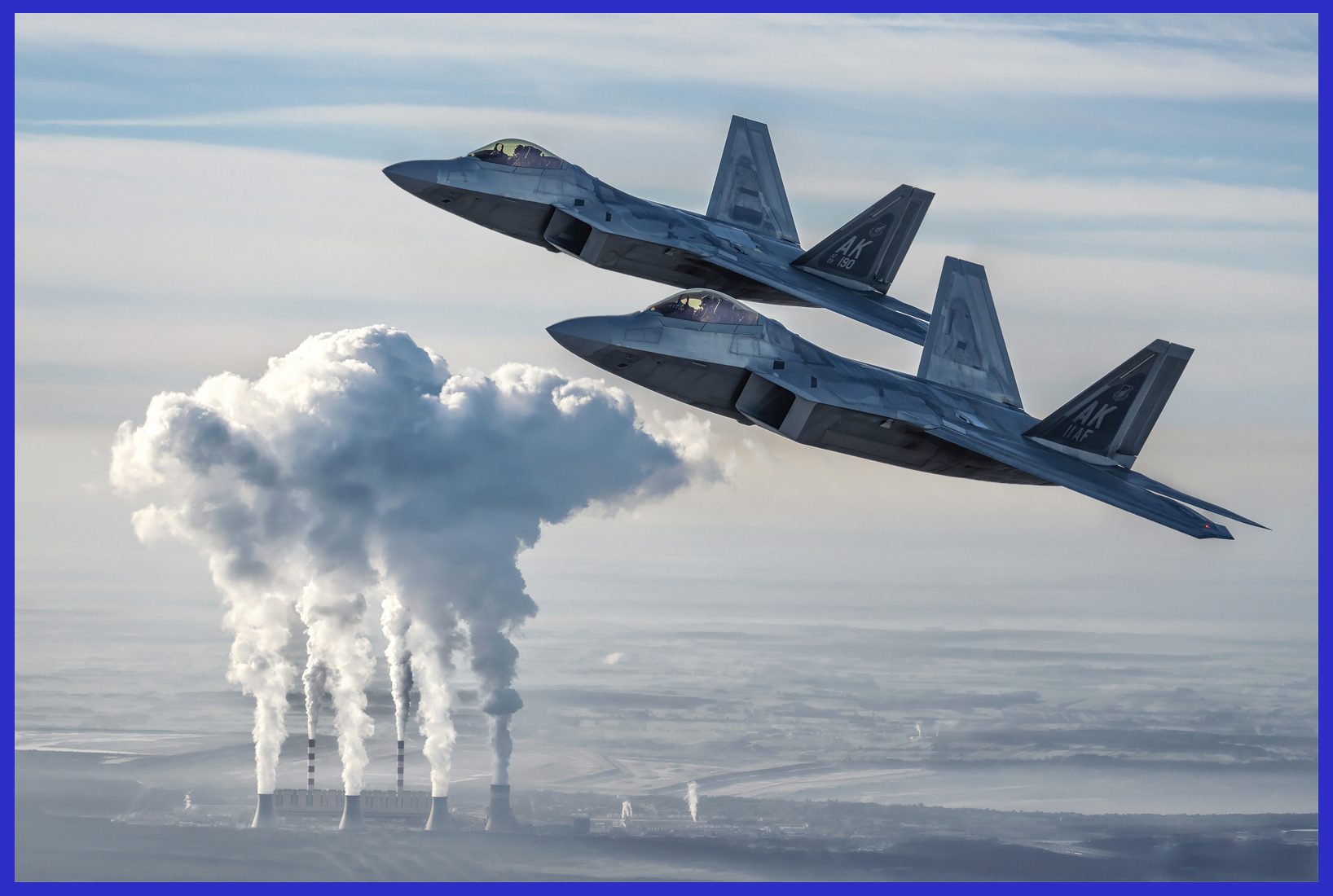
Upgrades and Developments of the F-22 Raptor to Date
The F-22, along with its sophisticated subsystems, was meticulously designed with the foresight of continuous upgrades throughout its operational lifespan, aiming to stay ahead of advancing technology and emerging threats. These ongoing modernization efforts encompass a broad spectrum of both software and hardware modifications, with a particular emphasis on enhancing ground attack and strike capabilities. The inaugural upgrade initiative took place in 2005, specifically tailored for Block 20 aircraft onwards, effectively enabling the utilization of Joint Direct Attack Munitions (JDAM). Notably, the radar system saw significant enhancement with the AN/APG-77(V)1 radar upgrade, gaining additional air-to-ground modes, a development that garnered certification in March 2007.
For the Block 30/35 aircraft, a thorough and substantial overhaul took place, resulting in the reinforcement of ground-attack capabilities through the seamless integration of synthetic aperture radar mapping, precise radio emitter direction-finding technology expanded electronic attack capabilities, and the smooth incorporation of the Small Diameter Bomb (SDB). This multifaceted and intricate upgrade process was set in motion with the initiation of testing in 2009, reaching its pinnacle with the successful delivery of the first modernized aircraft in 2011.

To effectively address concerns associated with oxygen deprivation, a comprehensive modification initiative was undertaken in 2012. This effort encompassed the installation of an automatic backup oxygen system (ABOS) and the enhancement of the overall life support system across all F-22s. Building upon these achievements, the year 2016 marked a significant milestone with the implementation of the Automatic Ground Collision Avoidance System (AGCAS) and crucial datalink updates. These advancements stand as a testament to the continuous evolution of the F-22 aircraft.
Starting in 2019, Lockheed Martin began an extensive effort to upgrade all Block 20 training aircraft to the advanced Block 30/35 configuration, strategically boosting the combat-ready fleet. The F-22’s pivotal role in testing technologies for its forthcoming Next Generation Air Dominance (NGAD) successor further enhances its significance. Anticipated technological transfers to the F-22 from this forward-looking process add to its importance.
In tandem with capability improvements, the F-22 fleet underwent a substantial $350 million “structures retrofit program,” addressing improper titanium heat treatment in specific airframe batches. By January 2021, a significant milestone was achieved with the comprehensive Structural Repair Program’s successful completion, ensuring extended operational lifespans for the fleet. Looking ahead, the F-22, operational beyond 2033, is expected to pave the way for NGAD’s sixth-generation manned fighter component.
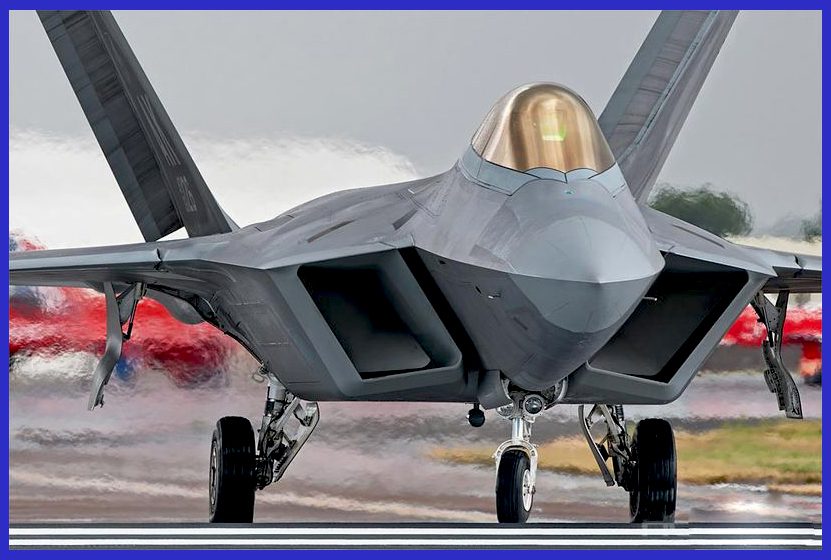
Unveiling the Design Analysis of the F-22 Raptor
The design analysis of the F-22 Raptor unveils a masterpiece of aerospace engineering, meticulously crafted to achieve air superiority through a harmonious blend of stealth, agility, situational awareness, and lethality.
Synopsis: As the program transitioned into full-scale development, known as Engineering and Manufacturing Development (EMD), the production F-22 design underwent noteworthy refinements compared to the earlier YF-22 technology demonstrator, despite retaining a 96% similar configuration. The wing’s leading-edge sweep angle was reduced from 48° to 42°, and the vertical stabilizers were both shifted rearward and reduced in area by 20%. Changes to the radome shape aimed for improved radar performance, while wingtips were clipped to accommodate antennas. Enhancements to pilot visibility and aerodynamics included moving the canopy forward by 7 inches and shifting the engine inlets rearward by 14 inches.
The shapes of the fuselage, wing, and stabilator trailing edges were carefully honed to enhance aerodynamics, structural integrity, and stealth characteristics. The production airframe was designed to maintain its structural integrity for over 8,000 hours of service. However, a slight increase in weight during EMD led to minor reductions in projected range and manoeuvrability performance.

The aircraft is remarkable for integrating supercruise, supermaneuverability, stealth, and sensor fusion into a single platform, enabling skilled execution of primarily counter-air missions even in highly contested areas. The F-22 features clipped diamond-like delta wings seamlessly merging with the fuselage, accompanied by four empennage surfaces and leading-edge root extensions reaching the upper outboard corner of the caret inlets. Control surfaces include leading-edge flaps, flaperons, ailerons, and canted vertical stabilizer-mounted rudders. The all-moving horizontal tails serve speed brake functionality, deflecting the ailerons upwards, flaperons downwards, and rudders outwards to boost drag. Notable features comprise a centrally positioned refuelling boom receptacle, retractable tricycle landing gear, and an emergency tailhook for runway constraints.
Thrust-Vectoring Engines: Equipped with thrust-vectoring nozzles, the F-22’s engine exhaust can be directed in various directions, ensuring exceptional agility and control during manoeuvres. This design leads to unmatched manoeuvrability in vertical and horizontal planes. The dual Pratt & Whitney F119 augmented turbofan engines of the aircraft are closely spaced and include pitch-axis thrust vectoring nozzles, spanning ±20 degrees. These nozzles seamlessly integrate into the F-22’s flight controls and vehicle management system. Each engine achieves a maximum thrust in the 35,000 lbf (156 kN) class.
The F-22’s elevated cruise speed and operational altitude compared to earlier fighters enhance sensor and weapon system effectiveness, thus boosting survivability against ground defences like surface-to-air missiles. Its supercruise capability—sustaining supersonic flight without afterburners—enables the F-22 to intercept targets that afterburner-dependent aircraft couldn’t reach due to fuel limitations.

Internal Weapons Bays: The F-22’s internal weapons bays maintain its stealth profile by hiding munitions and lowering its radar signature. This design boosts aircraft survivability and reduces vulnerability during missions. The use of internal weapons bays helps the aircraft maintain higher performance over most combat-configured fighters due to the lack of drag from external stores.
With its thrust and aerodynamics, the F-22 achieves consistent combat speeds of Mach 1.5 at 50,000 feet (15,000 m), yielding a 50% greater range for air-to-air missiles and twice the effective range for JDAMs compared to previous platforms. Its structure incorporates a significant amount of high-strength materials to endure the stress and heat of sustained supersonic flight, with titanium alloys and bismaleimide/epoxy composites constituting 42% and 24% of the structural weight, respectively.

Elegantly Concealed: The Stealthy Form Factor: The F-22’s sleek and angular design, coupled with radar-absorbing materials (RAM), significantly reduces its radar cross-section (RCS), making it extremely hard for enemy radar systems to detect and track. Carefully shaping its external surfaces minimizes radar wave reflections. The F-22 is deliberately designed to lower radio frequencies, infrared, and acoustic emissions, while also reducing visibility to the naked eye. Using flat thrust-vectoring nozzles, the aircraft lessens infrared emissions from its exhaust, countering the threat of infrared homing (“heat seeking”) missiles, whether they are surface-to-air or air-to-air.
To lower its infrared signature, it uses special topcoats and active cooling to manage heat during supersonic flight. Unlike previous designs like the F-117, the F-22 relies less on RAM, which requires demanding maintenance and is sensitive to weather. Unlike the B-2, which needs special hangars, the F-22 can be repaired on the flight line or in regular hangars.
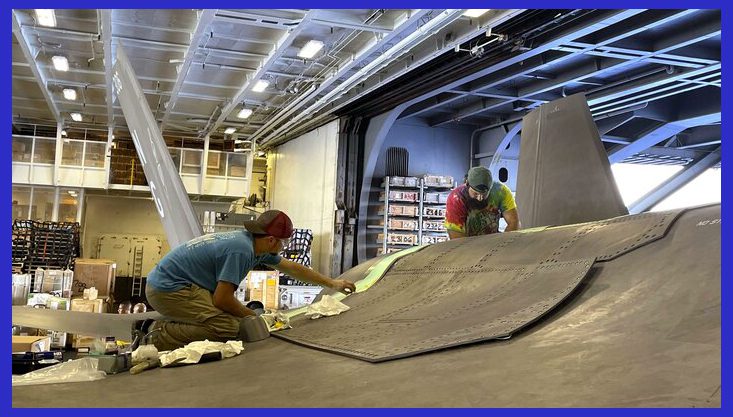
The F-22 is equipped with a Signature Assessment System that provides alerts when the radar signature is compromised and requires maintenance. Though the specific radar cross-section (RCS) of the F-22 is confidential, Lockheed Martin released information in 2009 suggesting that from specific angles, the aircraft’s RCS is approximately 0.0001 m2, akin to the radar reflection of a “steel marble.” Since 2021, the F-22 has been observed testing a novel chrome-like surface coating. This polished surface displays colour changes contingent on the viewer’s angle of the aircraft.
This innovation is believed to aid in reducing the F-22’s visibility to infrared search and track (IRST) systems and missiles. This coating has also appeared on certain F-35 and F-117 test aircraft. In the foreseeable future, this new chrome-like coating could be a significant advancement, particularly in air-to-air combat situations, potentially rendering the aircraft nearly 50-70% imperceptible to the naked eye of opposing pilots.
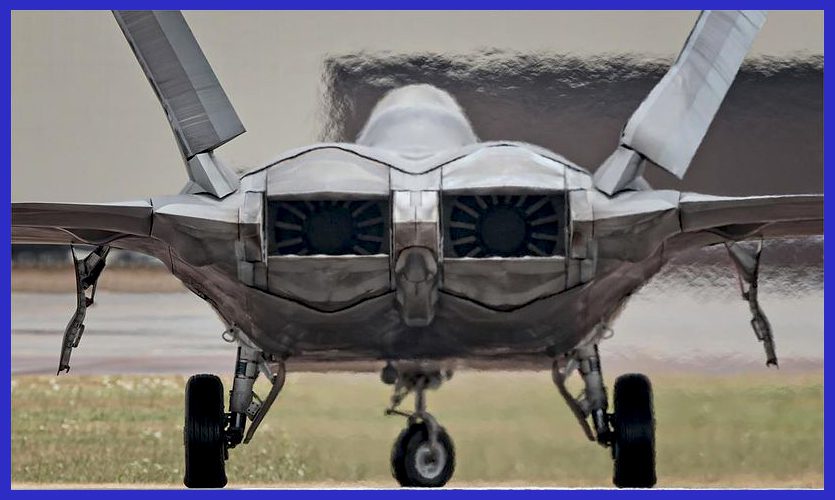
Canted Vertical Stabilizers: The outwardly canted vertical stabilizers provide improved directional stability and contribute to reduced radar cross-section. This design element also aids in maintaining control during high-speed and high-G manoeuvres.
Super Advanced Avionics Suite: The cockpit is outfitted with state-of-the-art avionics, featuring advanced glass cockpit displays, a heads-up display (HUD), and hands-on throttle-and-stick (HOTAS) controls. These elements significantly enhance the pilot’s situational awareness and capacity to manage intricate missions. Notable mission systems encompass the Sanders/General Electric AN/ALR-94 electronic warfare system, the Martin Marietta AN/AAR-56 infrared and ultraviolet Missile Launch Detector (MLD), the Westinghouse/Texas Instruments AN/APG-77 active electronically scanned array (AESA) radar, the TRW Communication/Navigation/Identification (CNI) suite, and an in-testing long-range advanced IRST.
To facilitate swifter upgrades, the avionics suite incorporates an open mission systems (OMS) processor, along with an open-source Kubernetes platform known as the Open Systems Enclave (OSE), enabling the utilization of containerized software from third-party vendors. Its upgraded APG-77(V)1 boasts air-to-ground functionality by utilizing synthetic aperture radar (SAR) mapping, ground-moving target indication/track (GMTI/GMTT), and strike modes. The radar dynamically changes frequencies over 1,200 times per second, minimizing interception probability, and demonstrates an estimated range of 400 km or more in narrow beams, and 244 km against an 11 sq ft target.

Complementing the radar is the ALR-94 electronic warfare system, which ranks among the most technically intricate equipment on the F-22. It incorporates over 30 antennas seamlessly integrated into the wings and fuselage to provide comprehensive radar warning receiver (RWR) coverage and threat geolocation from all directions. It operates as a passive detector capable of searching targets at ranges exceeding those of the radar (250+ nmi), supplying adequate data for radar lock and pinpointing emissions to a narrow beam. In response to identified threats, the defensive systems can trigger the pilot to deploy countermeasures like flares or chaff. The aircraft has also undergone enhancements to include an automatic ground collision avoidance system (GCAS).
The F-22’s operational proximity to the battlefield equips the aircraft with a threat detection and identification capability comparable to that of the RC-135 Rivet Joint. This also enables the F-22 to function as a “mini-AWACS,” although its radar is less potent than that of dedicated platforms. However, it emerges as the optimal choice for operations within highly congested enemy territory. This attribute empowers the F-22 to swiftly designate targets for allies and effectively coordinate friendly aircraft. Additionally, the electronic support measures (ESM) system’s radio frequency receivers grant the aircraft the capacity to seamlessly undertake intelligence, surveillance, and reconnaissance (ISR) tasks even within hostile territory, particularly during nighttime operations.

Pilot-Centric Cockpit Design of the F-22 Raptor: The cockpit layout and systems have been meticulously crafted with the pilot’s requirements at the forefront, ensuring ergonomic seating, instinctive controls, and a comprehensive array of situational awareness tools to optimize the effectiveness of missions. The monochrome head-up display provides an expansive field of view and serves as the central flight instrument; vital information is also projected onto the six-colour liquid-crystal display (LCD) panels. The main flight controls encompass a force-sensitive side-stick controller and a set of throttles.
The canopy’s dimensions measure approximately 140 inches in length, 45 inches in width, and 27 inches in height, with a weight of 360 pounds. It possesses the capacity to withstand supersonic wind pressures for up to 800 hours. The F-22 incorporates integrated radio functionality, wherein the signal processing systems are virtualized rather than housed as separate hardware modules. The integrated control panel (ICP) is a sophisticated keypad system used for inputting communications, navigation, and autopilot data.

The F-22 is equipped with an intricate life support system that encompasses various components, including the onboard oxygen generation system (OBOGS), specialized protective pilot garments, and a meticulously engineered breathing regulator/anti-g (BRAG) valve. This BRAG valve effectively manages the flow and pressure of oxygen to the pilot’s mask and garments, ensuring optimal conditions during flight.
The pilot garments, a result of the Advanced Technology Anti-G Suit (ATAGS) project, serve a multifaceted purpose: they provide safeguarding against chemical and biological hazards, offer protection in cold-water immersion scenarios, counteract the effects of g-forces, mitigate the impact of low pressure at high altitudes, and offer thermal relief. Additionally, an adapted M4 carbine assault rifle is being seamlessly integrated with the ejection seat system, further enhancing the pilot’s capabilities and safety measures.
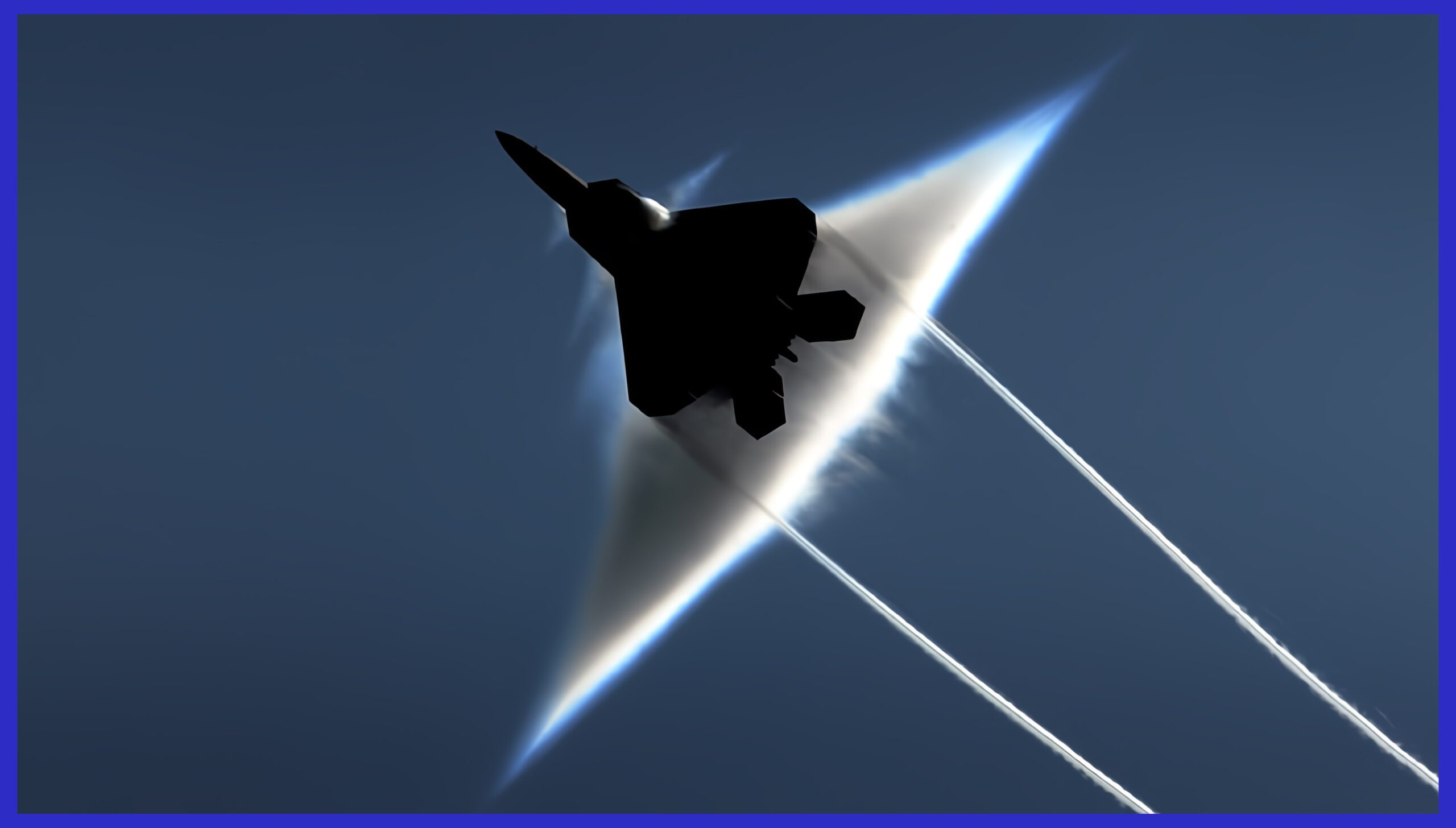
Configuration of the F-22’s Internal Weapons Bays: The F-22’s internal weapons bays are crucial in maintaining its stealth profile, as they effectively conceal munitions and contribute to a minimized radar signature. This strategic design choice significantly bolsters the aircraft’s overall survivability and diminishes its vulnerability during various missions. Comprising three internal weapons bays, the F-22 features a sizable main bay positioned on the underside of the fuselage, accompanied by two smaller bays on the fuselage’s sides.
Additionally, a compact bay situated behind each side bay, aft of the engine inlets, serves for housing countermeasures like flares. The primary internal weapons bay, split along the centerline, has the capacity to accommodate up to six LAU-142/A launchers designed for beyond-visual-range (BVR) missiles, including the primary air-to-air missile AIM-120 AMRAAM. Each side bay, on the other hand, is equipped with an LAU-141/A launcher intended for short-range missiles such as the AIM-9 Sidewinder.
One very important thing for stealth planes is their missile launchers. These launchers need the doors to open quickly for a very short time. During this time, special air or liquid systems quickly shoot the missiles out of the plane. This quick opening is carefully planned to avoid being easily seen and to keep the plane hidden. This helps the plane stay invisible to radar even when it’s flying fast, and it lets the missiles be launched when the plane is going really fast.
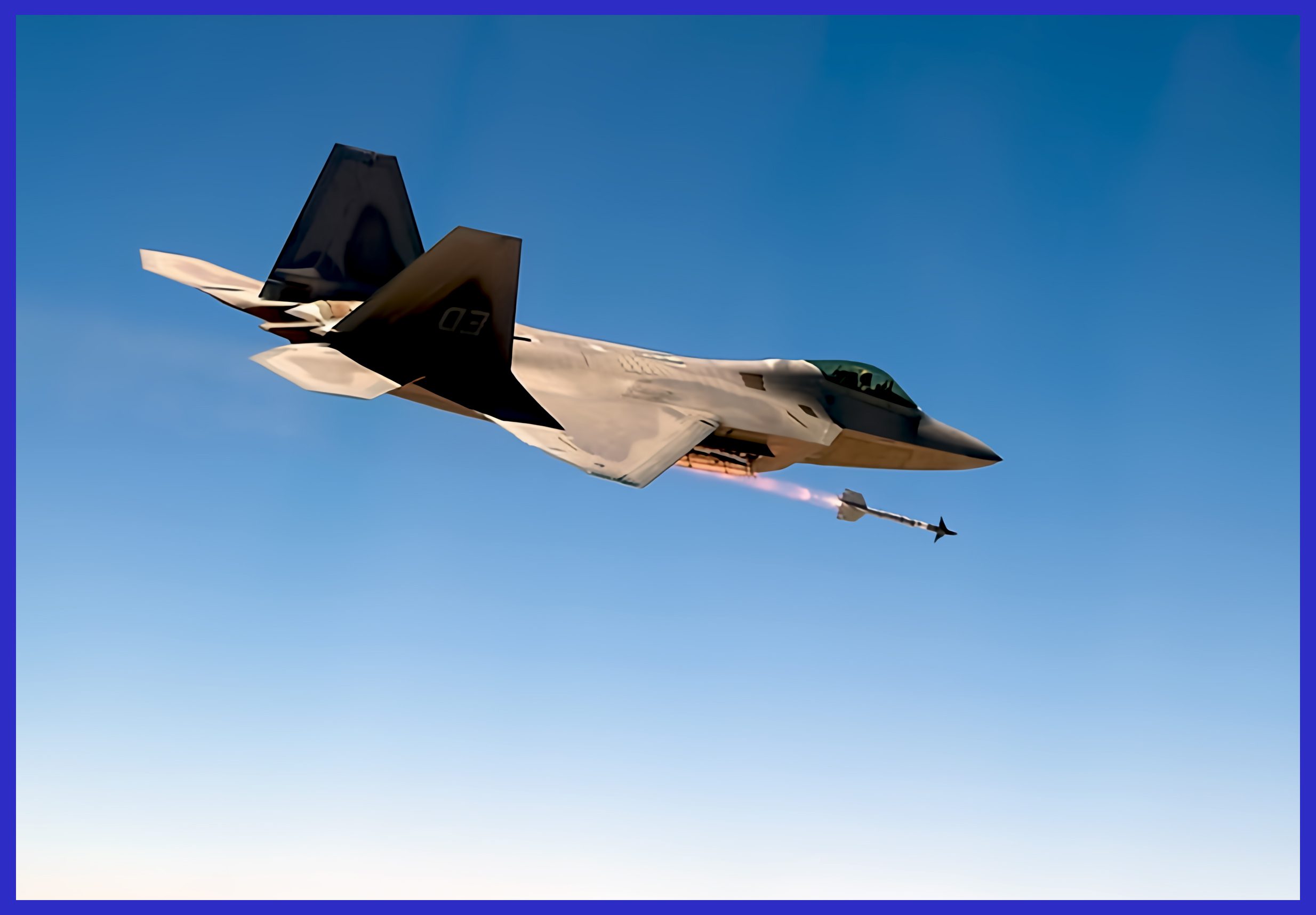
Although the F-22 was initially configured for air-to-air missiles, its latest upgrades have significantly expanded the range of its combat capabilities. Currently, the main bay can replace four launchers with two bomb racks, each capable of carrying one 1,000 lb (450 kg) bomb or four 250 lb (110 kg) bombs. This results in a total air-to-surface ordnance capacity of 2,000 pounds (910 kg) with GPS-guided options like JDAMs and SDBs. Additionally, an internally mounted M61A2 Vulcan 20 mm rotary cannon is integrated into the airplane’s right-wing root, with a retractable door covering the muzzle. The cannon’s firing trajectory is displayed on the pilot’s head-up display using radar projection, aiding in precise target engagement during close combat scenarios.
While the F-22 is generally configured to carry weapons internally, it has also been designed to carry weapons externally depending on the circumstances. The wings are equipped with four hard points, two on each side, and each hard point can handle up to 5,000 lb (2,300 kg) of weight. The inboard hardpoints can accommodate pylons that can hold either a detachable 600-gallon (2,270 L) external fuel tank or a launcher capable of carrying two air-to-air missiles.
The two outboard hardpoints have been specifically assigned for stealthy pods that house the IRST and mission systems. The aircraft can discard external tanks and their pylon attachments after using them for the first time. This helps restore the plane’s low observable characteristics and kinematic performance.

F-22 Raptor: For the United States Only
The F-22 cannot be exported under US federal law, designed to safeguard its stealth technology and classified features. Nevertheless, several nations, including Japan, Israel, Saudi Arabia, and Australia, would naturally be inclined to consider the F-22 if it were an option. Interestingly, a 2007 U.S. law explicitly prohibits the export of the Raptor and its sensitive technology. In view of export potential, along with the intention to ramp up both quality and quantity, the JSF program—presently available as the F-35 Lightning II to all U.S. allies—was initiated.
However, this development has indirectly enhanced the export prospects of aircraft like the Eurofighter Typhoon and Dassault Rafale in the short term and has also catalyzed numerous nations’ independent fighter programs. A pertinent example is South Korea’s KF-21 Boramae, which successfully undertook its inaugural flight on July 19, 2022; these countries are among those diligently pursuing indigenous stealth fighter projects for the coming decade. Similarly, Russia is advancing its own Sukhoi T-50, or PAK-FA, project, which currently serves the Russian Air Force as the SU-57 Felon.
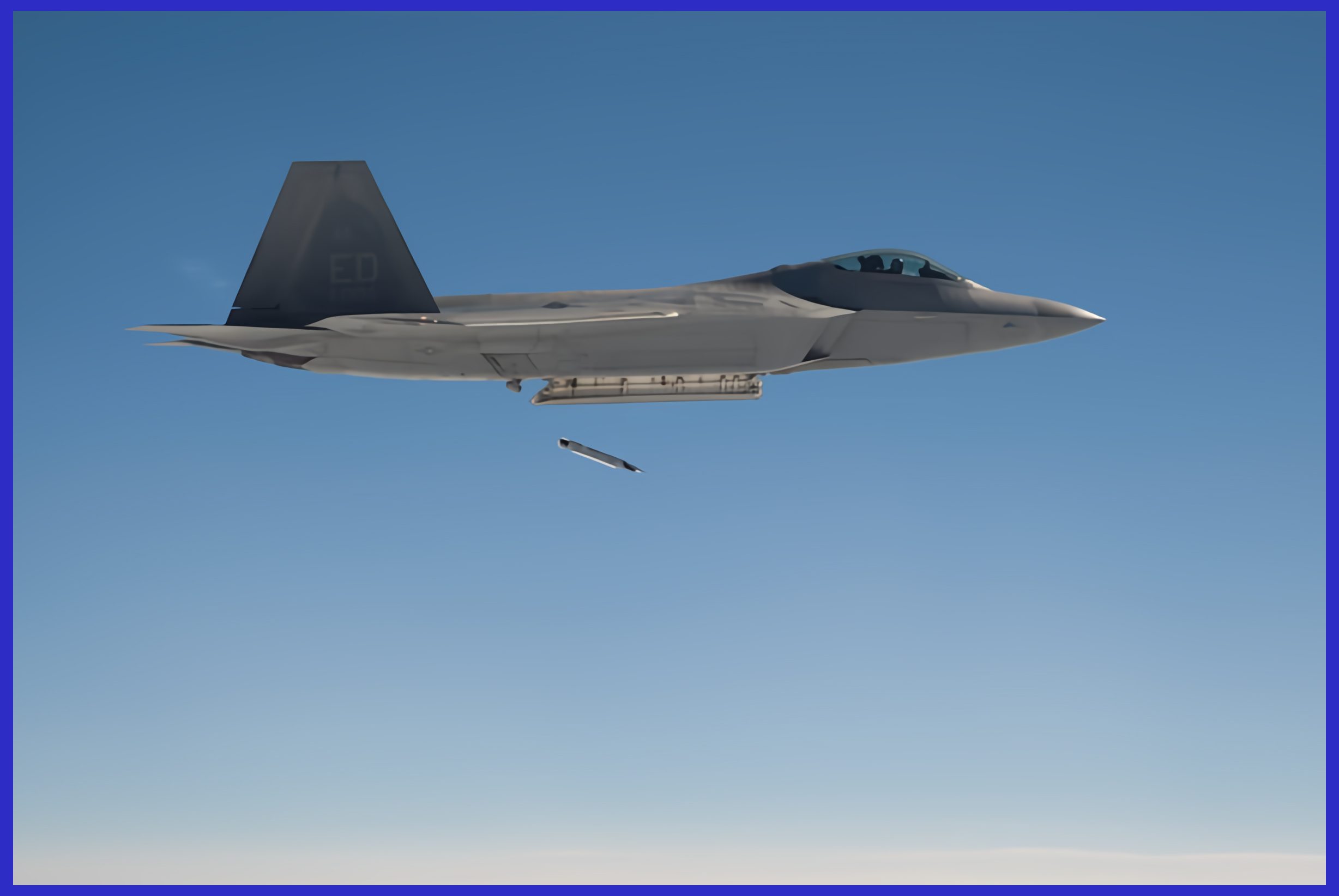
Combat Debut History of the F-22 Raptor as of 2023
The F-22’s initial combat deployment took place in 2014 when a limited number of Raptors were dispatched to the Middle East. This deployment was part of ongoing operations in the region and involved conducting some of the initial strikes for Operation Inherent Resolve. These deployments aimed to demonstrate the F-22’s capabilities and gather operational data. During these missions, the aircraft dropped GPS-guided bombs weighing 1,000 pounds on Islamic State targets near the Tishrin Dam. From September 2014 to July 2015, F-22s conducted 204 sorties over Syria, releasing a total of 270 bombs across approximately 60 locations.
In November 2017, F-22s joined forces with B-52s to bomb opium production and storage facilities in Taliban-controlled areas of Afghanistan. Additionally, F-22s played a role in the U.S. strikes that successfully engaged pro-government and Russian Wagner Group paramilitary forces near Khasham in eastern Syria on February 7, 2018. Despite these strike missions, the F-22’s primary role during the operation was centred around intelligence, surveillance, and reconnaissance (ISR) activities.
On February 4, 2023, an F-22 from the 1st Fighter Wing successfully shot down an alleged Chinese spy balloon within visual range using a sidewinder missile. This incident took place off the coast of South Carolina at an altitude ranging from 60,000 to 65,000 ft. It was later determined that the Chinese balloon was conducting an ISR mission. The wreckage of the balloon landed approximately 6 miles offshore and was subsequently secured by ships from the U.S. Navy and U.S. Coast Guard. A few days later, F-22s once again shot down additional high-altitude, unidentified objects near the coast of Alaska on February 10 and over Yukon on February 11.
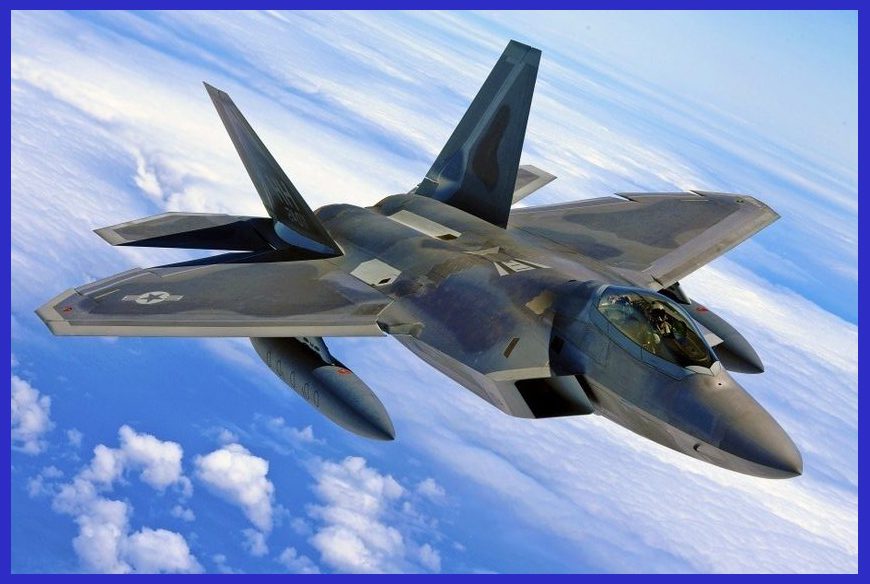
Despite not having achieved any major kills based on its design parameters thus far, the F-22 undeniably holds significant potential as an air dominance fighter. If presented with the opportunity, it is highly likely that the aircraft could successfully score several “Splash” hits within a short period of time.
Envisioned F-22 Raptor Derivatives
A conceptual experimental aircraft, named the X-44 MANTA (multi-axis, no-tail aircraft), was developed based on the F-22 framework. It incorporated advanced thrust vectoring controls and omitted conventional aerodynamic surfaces. The aircraft’s design omitted rudders, ailerons, and elevators, opting to exclusively rely on thrust vectoring for manoeuvring. Unfortunately, funding for this initiative was halted in 2000. Nevertheless, the United States remains committed to progressing sixth-generation aircraft. It’s quite likely that by 2029 or potentially earlier, the inaugural prototype will be publicly revealed.
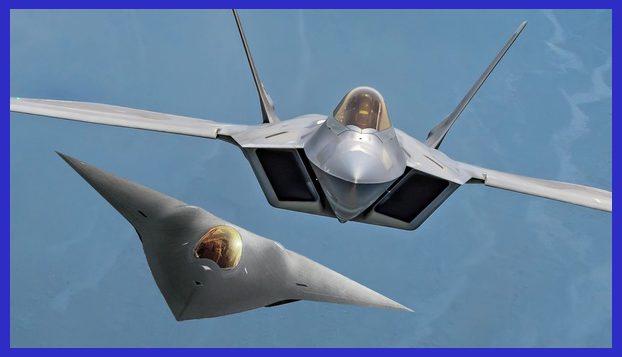
The Technical Specifications of the 5th Generation Lockheed Martin/Boeing F-22 Raptor
- Country Of Origin: USA
- Crew: 1
- Length: 62 ft 1 in ( 18.92 m )
- Wingspan: 44 ft 6 in ( 13.56 m )
- Height: 16 ft 8 in ( 5.08 m )
- Wing area: 840 sq ft ( 78 m2 )
- Empty Weight: 19,700 kg ( 43,430 lb )
- Normal takeoff: 29,300 kg ( 64,595 lb )
- Max Takeoff Weight: 38,000 kg ( 83,776 lb )
- Fuel capacity: Internally, it can carry 8,200 kg (18,077 lb), and externally, it can carry 12,000 kg (26,455 lb) using two fuel tanks
- Powerplant: 2 × Pratt & Whitney F119-PW-100 augmented turbofans, 26,000 lbf (116 kN) thrust each dry, 35,000 lbf (156 kN) with afterburner
- Max Speed: Mach 2.25 _ 2,414 km/h ( 1,500 mph ) at altitude and Mach 1.82 _ 1,963 km/h ( 1,220 mph ) supercruise at altitude
- Combat range: 850 km ( 528 mi ) in supercruise and 1,093 km ( 679 mi ) in subsonic
- Ferry range with external fuel: 2,897 km ( 1,800 mi ) with two external tanks
- Service ceiling: 65,000 ft ( 19,812 m )
- g limits: +9.0/−3.0
- Service life: 8,000 hours
- Armament: Equipped with 1× 20 mm M61A2 Vulcan rotary, six-barrel Gatling cannon, 480 rounds. And fortified with 8 internal hardpoints, the weapons bays housing 6× AIM-120C/D AMRAAM and 2× AIM-9M/X Sidewinder AAMs, as well as the option for 2× 1,000 lb (450 kg) JDAMs or 8× 250 lb (110 kg) GBU-39 SDBs for air-to-ground munitions. Additionally, external weapons bays include 4× under-wing pylon stations capable of carrying weapons, each with a capacity of 2,270 kg (5,000 lb) or 600 U.S. gallons (2,270 L) for drop tanks, along with 4× AIM-120 AMRAAMs.
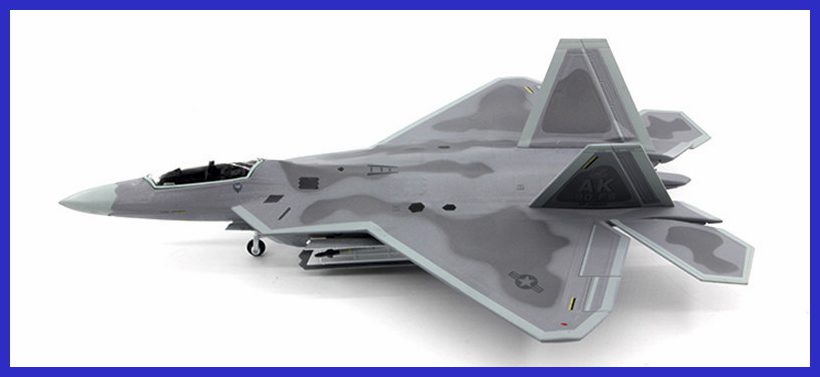
Furthermore, seize this exclusive opportunity to acquire the exquisite large-scale 1/72 premium die-cast models of the formidable Lockheed F-22A Raptor. These remarkable and iconic military jets boast an impeccable track record and are now available for purchase on AirModels with worldwide delivery. Click here now to secure your piece before the limited stock is depleted.
In conclusion, the F-22 stands as a remarkable testament to aerospace engineering and innovation. With its cutting-edge technology, formidable armament, and unparalleled manoeuvrability, the F-22 represents the pinnacle of modern air superiority. Its sleek design and advanced capabilities enable it to dominate the skies, ensuring that it remains a symbol of excellence in military aviation. As a true marvel of human ingenuity, the F-22 continues to inspire awe and admiration, embodying the relentless pursuit of excellence in the field of aviation.
Important Announcement for Our Valued Readers!
After an article is published, it is possible that updates or changes may have occurred beyond the time of publication. Therefore, it is important to be aware that certain information in the article might be outdated. To ensure the most accurate analysis, it is highly recommended to verify the content with the latest sources available.
However, we are dedicated to delivering outstanding articles on military products and global updates. Maintaining quality and smooth operation requires resources. Your support sustains our efforts in providing insightful content. By purchasing high-quality products through our affiliated links, you help us keep our platform alive and acquire top-notch items. Your unwavering support is invaluable and inspires us to strive further.
We welcome your suggestions and requests for more information, as we value feedback from our readers. If there’s specific defence material or equipment not covered on our site, please share your request in the comments. We’ll strive to research and provide the required information. We sincerely thank you for your unwavering interest in our website, and we eagerly anticipate hearing from you! Enjoy your reading experience!